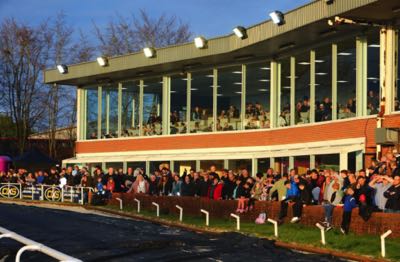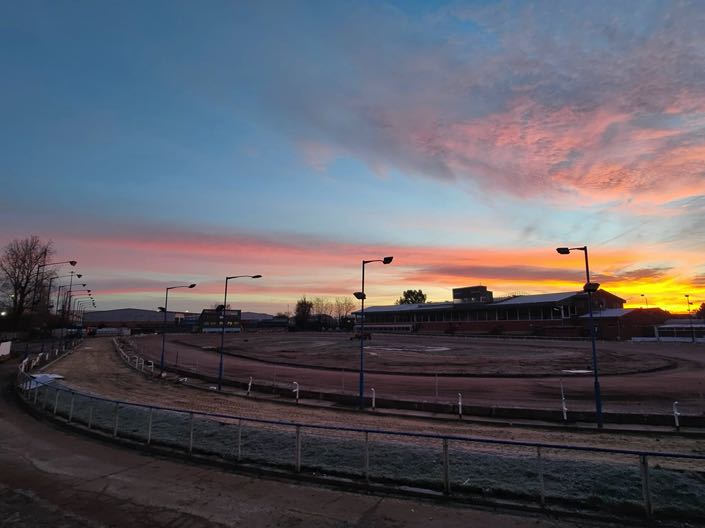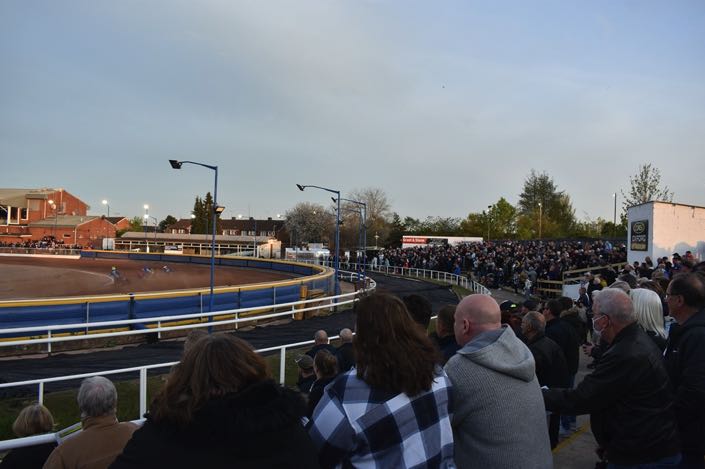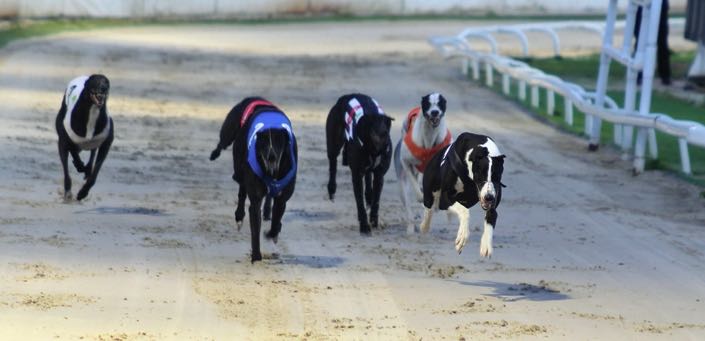- Address: Sandy Ln, Oxford OX4 6LJ
- Email: enquiries@oxford-stadium.co.uk
- Website: oxford-stadium.co.uk

As is so often the case with venues that host greyhound racing, Oxford Stadium welcomes both dogs and speedway events. Located in the Sandy Lane area of Cowley, Oxford Stadium opened for the first time in 1939 and was given a renovation in 1986 before being expanded at the turn of the millennium. Historically, raving took place on Tuesday, Thursday and Saturday evenings with Bookmakers Afternoon Greyhound Services seeing racing also take place on Friday and Sunday afternoons.
The stadium actually closed in 2012, leading to a hard-fought campaign to get it back open again that reached its conclusion in 2021 when it was confirmed that both greyhound racing and speedway would return the following year. The stadium now has much more of a community feel to it than ever before, with part of the remit behind its re-opening being the ability to welcome people from the local area to use the dedicated social facilities. Dog racing lovers will still enjoy all of the facilities that they’d expect too, making it the best of both worlds.
The Track & Facilities

In terms of the facilities on offer, the decade-long closure of Oxford Stadium has allowed those behind the venture to modernise things everywhere. There is a wellness hub on-site, for example, offering visitors the likes of saunas, a hot tub and the use of steam rooms; though these are obviously a separate thing from where you’ll go to watch the dogs. There is a sports bar and a restaurant in the grandstand, as well as places to buy more of a fast food option if you’re peckish but don’t fancy the formality on offer in the restaurant.
If you’re all about the formality, on the other hand, then you’ll be pleased to know that executive suites are an option open to you. The nature of the stadium as a community project means that it is open seven days a week in various different capacities, with the hospitality areas that are used to schmooze clients when racing is on becoming areas that will host groups and meetings the rest of the time. Regardless of where in the stadium you want to be located, you’ll find a modern-looking and clean experience that can be enjoyed by anyone and everyone that makes their way to Oxford.
Track Information
As for the track itself, it is 379 metres in circumference and the first bend comes after 108 metres. It has a Swaffham hare and the following distances are what are raced there:
- 250 Metres
- 450 Metres
- 595 Metres
- 645 Metres
- 845 Metres
- 1,040 Metres
Major Races & Events

As with other big greyhound racing venues, Oxford Stadium enjoyed its fair share of major events over the years. When the stadium closed in 2012, however, many of the races that were held there, such as the Pall Mall Stakes, were either moved somewhere else or discontinued forever.
The Cesarewitch left Oxford in 2012 and was then brought back by Entain at the Romford Stadium that the company owned. As a result, there are no races we can tell you about in this section, though we’ll update it the stadium brings any of them back.
In the News
As you might imagine, most of the news stories about Oxford Stadium are in celebration of the fact that it has re-opened for the first time in a decade. Not everyone was happy with the return of greyhound racing, however, with the animal rights organisation PETA claiming that the majority of people in Oxford didn’t want it. Using data from Savanta ComRes, PETA and the League Against Cruel Sports said that 71% of people in the county wanted the stadium to be used for purposes other than greyhound racing.
As with everything that comes from PETA, this information needs to be taken with a pinch of salt. That being said, the Oxford Mail reported that more than 30,000 people, including local celebrity Miriam Margolyes, had signed a petition opposing its use as a greyhound racing facility. The League Against Cruel Sport’s Emily Lawrence referred to the sport as ‘cruel and outdated’, but it is worth noting that only 206 people responded to the poll that they and PETA were basing their opinion on, with the ‘Don’t Know’ option removed from the question about alternative uses for the stadium.
About Oxford Stadium

Constructed in 1938 on the site of what had previously been an unregulated flapping track, the original Oxford Stadium saw the rear wheel of a motorcar ‘jacked up’ and turned in order to drive the lure around the track. The back straight of the course ran alongside the Thame Branch of the Great Western Railway, which has now become the BMW Freight Line. A grandstand was erected and the stadium was welcomed into the pantheon of those that were licensed by the sport’s governing body, the National Greyhound Racing Club.
The land was owned by a man named Mr Johnson, who agreed to lease it to Mr Leslie Vernon Calcutt. As well as bringing greyhound racing to Oxford, the track was also used for a speedway team that formed in 1939 and ran until 2008. The Oxford Cheetahs won the biggest competition in the sport in the United Kingdom five times, though it was unquestionably greyhound racing that the venue became best known for. It took place for the first time on the 31st of March 1939, with the opening ceremony being carried out by Lord Denham.
The Formative Years
Having only just opened its doors in 1939, the track closed and re-opened several times during the Second World War. A fire destroyed the main stand in 1944, with reports being that it had been caused when a newspaper blew onto a heater. A good-sized course with a nice run up to the first bend, Calcutt was appointed to be the Bristol Greyhound Racing Association Limited’s Director but fell ill in 1952, dying on the third of August aged just 49. Over the years that followed, numerous different dog and trainer combinations did well as the track.
One of the biggest changes came about in 1964 when the Oxfordshire Stakes was introduced to the relatively young track. Run over 450 metres, it became a major event in the decades that followed and really put Oxford Stadium on the map in terms of being a truly important greyhound racing venue. Another big change came about in 1967 when the Bookmakers Afternoon Greyhound Racing Service was introduced for the first time, resulting in racing taking place during several afternoons to please the bookies.
Developments & Closure
In the decades that followed, Oxford Stadium saw numerous different developments take place. An outside Sumner hare came in in 1974, for example, then the year after Bristol Stadium Limited agreed a deal worth £235,000 with Oxford City Council’s Housing Committee that resulted in a Save Our Stadium group being formed. The stadium closed on the 31st December 1975, reopening in the March of 1976 before a buyer was found in 1977, with Northern Sports paying £250,000 for the track and permanent closure stopped.
The 1980s were a big decade, including the demolition of the on-site kennels. In 1986, Northern Sport spent £1.5 million on a new grandstand restaurant and sports centre, resulting in success for the stadium financial over the following years. By the 1990s, Oxford was one of the most successful provincial stadiums, but in 1995 the recession had caused major issues for Northern Sports and the venue was made a going concern. Donald Joyce, a former member of Save Our Stadium, purchased it in 1996 and sold it to the Greyhound Racing association three years later.
That feeling that Oxford Stadium was always living on the edge continued, despite GRA adding a multi-million pound extension in 2000. A Swaffham hare system was introduced at a cost of £130,000 and other changes were brought in, but when GRA’s patent company, Wembley Plc, was broken apart in 2005, it seemed as though the writing was on the wall. Racing continued for another seven years, but in 2012 the last greyhound meeting took place in front of a capacity crowd before the doors were shut, seemingly forever. It re-opened in 2022, however, with a 10-year lease ensuring more racing is to come.
Track Records
Here is a look at the records that were managed at the track prior to its closure in 2012. At the time of writing, there are no ‘modern’ records that we can tell you about, but we’ll update this section when that changes:
| Distance | Record Time | Date Set |
|---|---|---|
| 250 Metres | 14.65 Seconds | 24th March 2009 |
| 450 Metres | 26.20 Seconds | 11th February 2010 |
| 595 Metres | 35.87 Seconds | 25th March 2008 |
| 645 Metres | 38.98 Seconds | 25th March 2008 |
| 845 Metres | 52.16 Seconds | 22nd March 1998 |
| 1040 Metres | 67.63 Seconds | 14th November 1989 |
| 450 Metre Hurdles | 27.12 Seconds | 5th April 2005 |
| 645 Metre Hurdles | 40.94 Seconds | 6th February 2001 |